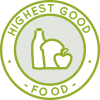Squash
This page is an open source resource guide for squash. It is for growing and maintaining the most bio-diverse, delicious, and broadly applicable squash selection possible. It contains cultural considerations, planting guidelines, descriptions, and the best places we’ve found for purchasing the species we’ve listed. As part of the One Community Highest Good food component of global transformation, this page will continue to evolve indefinitely to contain maintenance and care tips, accessioning and plant breeding and sharing information as part of the One Community open source botanical garden model, and even recipe’s, preparations, and preservation methods used on the property.
SUGGESTIONS | CONSULTING | MEMBERSHIP | OTHER OPTIONS
Click these links to be taken directly to the relevant sections on this page:
PAGES RELATED TO THIS PAGE (click icons for complete pages)











CLICK THESE ICONS TO JOIN US THROUGH SOCIAL MEDIA











SQUASH
(Click here for squash purchase details)
Squash (Cucurbita maxima, C. moschata, C. pepo)
 | Squash are a vining species producing thin-skinned summer fruits and hard-shelled fruits that keep through winter. Summer squash are harvested continuously through the growing season and are eaten fresh, pickled, canned, or dried. Winter squash are harvested in fall are stored until use; they are usually cooked or can be dried, pickled, and canned. The mature seeds are also hulled and eaten. Squash is rich in nutrients including vitamins, carotenoids, cucurbitacins, fatty acids, etc. |
CULTURAL CONSIDERATIONS
- Squash do well with organic mulch
- Soils should be high in organic matter
- Plants need warm soil and steady moisture
- Squash are subject to several insect pests and diseases
- A 1% solution of baking soda helps control fungal diseases
PLANTING GUIDELINES
Transplant squash out after last frost, when soil has warmed. Row covers, black mulch and hot caps can help speed up early growth on plants. Squash are heavy feeders, particularly of calcium, so bone meal should be worked into the soil prior to planting. Foliar feed with seaweed if plants show signs of nutrient deficiency.


VIDEO COMING: Planting tutorial followed by timelapse growth videos
SEE OUR HOW TO HELP AND/OR CROWDFUNDING CAMPAIGN PAGE IF YOU’D LIKE TO GET INVOLVED AND/OR SUPPORT ONE COMMUNITY’S DEVELOPMENT PROCESS.
ADDITIONAL INFORMATION
Wikipedia ” Squash
 | GS#1 :: Amish Pie Squash (Cucurbita maxima)Amish Pie is an heirloom squash obtained by James Robinson from an Amish gardener in Maryland and was introduced by Seed Savers in 1999. It has firm, pale orange, sweet flesh, and grows up to 5 inches thick with fruits weighing nearly eighty pounds. This variety has the shape of a heart or an acorn and is great for making pies, canning, and freezing. It generally matures within one hundred days from transplant. |  | GS#2 :: Anna Swartz Squash (Cucurbita maxima)Hubbard Anna Swartz squash aka Anna Swartz, was an heirloom seed given to an employer by a washroom woman named Anna Swartz. This variety was introduced commercially through Seed Savers in 1999. It’s hard shell and easy storability is what drew Anna to the squash. This squash has flesh the color of a sweet potato, as well as a similar taste, and can weigh up to 8 pounds. Anna Swartz can be harvested up to one hundred days |  | GS#3 :: Australian Butter Squash (Cucurbita maxima)Australian Butter squash is a rare heirloom plant. It has extra thick dry orange/peach flesh, a bright yellow stem, small seed cavity, and a ribbed salmon colored shell. It is a great squash for baking and pies and can weigh close to fifteen pounds. This variety stores well and matures in ninety to one hundred days. |  | GS#4 :: Black Beauty Zucchini (Cucurbita pepo)Black Beauty Zucchini is the standard summer squash and was introduced in the United States in the 1920’s. It is a fast growing plant that is easy to grow, with a dark green shell and white creamy firm flesh. This variety is best eaten when under 8 inches long, and is great sliced, battered, or fried. It can also be used in soups, salads, and casseroles and freezes well. Harvest Black Beauty when skins are tender and pick small for baby zucchini. |  | GS#5 :: Boston Marrow Squash (Cucurbita maxima)Boston Marrow squash was introduced in 1831 and was at one time the standard early squash. It has been referred to as the true pie squash by a late 19th Century seedsman, John Ives. Its flesh is thick, flaky, and fiber free, with a bright red/orange skin on the outside. This variety generally weighs from ten to twenty pounds, however it will grow larger in optimal conditions. Small pumpkins are good for cooking and eating while the larger are typically used for Jack-o-lanterns or exhibition. Boston Marrow matures in ninety to one-hundred days. |  | GS#6 :: Galeux d’Eysines Squash (Cucurbita maxima)Galeux d’Eysines squash is a French heirloom from the Bordeaux region and was noted in Vilmorin’s Les Plantes Potageres in 1883. It is a sweet orange squash that makes velvety smooth sauces and soups and can also be baked. This variety has warty looking knobs on the outside that are caused by sugars in the skin. It can weigh from ten to twenty pounds and should be harvested before fully mature since the skin tends to crack. Galeux d’Eysines is excellent for storage (lasting up to 6 months) and produces in ninety days. |  | GS#7 :: Guatemalan Blue Squash (Cucurbita maxima)Guatemalan Blue is a variety from Guatemala that is difficult to find. It belongs to the banana group of squashes and is noted for its fine table quality. This open pollinated squash selection is dark blue with light stripes and has firm, thick and hearty, golden-yellow flesh. Normally the fruits range from up to twenty inches in length and average 5 to 10 pounds. Guatemalan Blue tastes great roasted or baked and matures in ninety to ninety-five days. |  | GS#8 :: Long Island Cheese Squash (Cucurbita moschata)Long Island Cheese (named for its resemblance to a wheel of cheese) is an East Coast heirloom squash introduced in 1807 by Bernard McMahon of Philadelphia. This variety has a sweet taste and is remembered as being great for making squash pie by people in New York and New Jersey. It is buff-colored squash with dark orange flesh, medium ribbed and flattened in appearance, and is a good keeper. Long Island Cheese typically averages in weight from six to twelve pounds and matures in ninety to one hundred days. |  | GS#9 :: Rouge Vif d’Etampes Squash (Cucurbita maxima)Rouge Vif d’Etampes is a beautiful French heirloom pumpkin that is actually a squash introduced by W. Atlee Burpee in 1883; it was also used as the model for Cinderella’s coach. This variety is a flattened red-orange fruit with wide ribs, weighing up to twenty pounds. It has moderately sweet flesh that is suitable for pumpkin or squash pie but most notably it is used in decorating. Rouge Vif d’Etampes matures in ninety-five days. |  | GS#10 :: Queensland Blue Squash (Cucurbita maxima)Queensland Blue is an Australian Blue squash imported into the United States in 1932 from Sydney. It has vigorous vines that produce bluish-green, 6-10 pound fruits with deep ribbing. This variety has sugary, meaty flesh that is brilliant bright orange, with a turban shape. It is easy to grow from seed and reaches up to twenty pounds. Queensland Blue is also a good keeper and matures within one hundred and ten days. |
|
We will also be growing the following additional squash:
Squash (Cucurbita maxima, C. moschata, C. pepo) :: GS11 – GS#20
11. Jarrahdale 12. Rio Lucio Pumpkin 13. Kikuza 14. Greek Sweet Red 15. Seminole 16. Dickinson 17. Zucchetta Rampicante 18. Lebanese Light Green 19. Little Greenseed 20. Oaxacan
Squash Plant Material/Seed Providers:
Squash Purchase Details
| REF # | VEGETABLES | VARIETY | SOURCE | QUANTITY | UNIT COST | TOTAL COST |
| GS#1 | Squash | Amish Pie | SSE | 3pkt. | $4 | $12 |
| GS#2 | Squash | Anna Swartz | SSE | 3pkt. | $4 | $12 |
| GS#3 | Squash | Australian Butter | SSE | 3pkt. | $4 | $12 |
| GS#4 | Squash | Black Beauty Zucchini | SSE | 3pkt. | $4 | $12 |
| GS#5 | Squash | Boston Marrow | SSE | 3pkt. | $4 | $12 |
| GS#6 | Squash | Galeux d’Eysines | SSE | 3pkt. | $4 | $12 |
| GS#7 | Squash | Guatemalan Blue | SSE | 3pkt. | $4 | $12 |
| GS#8 | Squash | Long Island Cheese | SSE | 3pkt. | $4 | $12 |
| GS#9 | Squash | Rouge Vif d’Etampes | SSE | 3pkt. | $4 | $12 |
| GS#10 | Squash | Queensland Blue | SSE | 3pkt. | $4 | $12 |
| GS#11 | Squash | Jarrahdale | SSE | 3pkt. | $4 | $12 |
| GS#12 | Squash | Rio Lucio Pumpkin | SSE | 3pkt. | $4 | $12 |
| GS#13 | Squash | Kikuza | SSE | 3pkt. | $4 | $12 |
| GS#14 | Squash | Greek Sweet Red | SSE | 3pkt. | $4 | $12 |
| GS#15 | Squash | Seminole | SSE | 3pkt. | $4 | $12 |
| GS#16 | Squash | Dickinson | SSE | 3pkt. | $4 | $12 |
| GS#17 | Squash | Zucchetta Rampicante | SSE | 3pkt. | $4 | $12 |
| GS#18 | Squash | Lebanese Light Green | SSE | 3pkt. | $4 | $12 |
| GS#19 | Squash | Little Greenseed | SSE | 3pkt. | $4 | $12 |
| GS#20 | Squash | Oaxacan | SSE | 3pkt. | $4 | $12 |
OTHER SQUASH RESOURCES
We are seeking awesome squash resources. If you know of one, please click here to share it with us so we can make this page better.
SQUASH AS PART OF THE BOTANICAL GARDEN MODEL
This section will evolve to include accessioning and plant breeding and sharing information as part of the One Community open source botanical garden model.
SQUASH PREPARATION, PRESERVATION, AND RECIPES
This section will evolve to include testimonials, recipe’s, preparations, and preservation methods used on the property first, and then later with additional information from other Highest Good collaborators and teacher/demonstration hubs.

Summer Squash Salad with Quinoa
Recipe courtesy of: The Right Recipe
Total Time: 30 min
Prep: 15 min
Cook: 15 min | Yield: 4-6 Servings
Level: Easy |
Ingredients- 1 handful fresh basil leaves
- 1 teaspoon Dijon mustard
- 1 teaspoon honey
- Juice of one lemon
- 2 tablespoons extra virgin olive oil
- 2 cups cooked and cooled quinoa (see package directions)
- 1 cup mozzarella (diced)
- 2 cups summer squash, yellow and green (diced)
- 1 tablespoon extra virgin olive oil
- 2 tablespoons chives (minced)
- Salt and pepper (to taste)
| DirectionsFor the dressing: - In a blender (or Magic Bullet which comes in handy….to puree small batches quickly….easy clean up too), puree basil leaves, mustard, honey, lemon juice, and olive oil until smooth. Set aside.
To cook the squash: - Heat a large non-stick skillet over high heat.
- Add 1 tablespoon olive to coat the surface then spread the diced squash out in a single layer and let cook (without disturbing) 3-4 minutes until squash is nicely caramelized on one side.
- Toss around while cooking just 1-2 minutes more then remove squash to a plate to cool (take care not to over-cook squash or it will turn to mush).
- Season lightly with salt and pepper.
To make the salad: - In a medium bowl, gently toss together the quinoa, squash, mozzarella, and chives.
- Add basil dressing and toss well.
- Season with salt and pepper to taste.
- Serve cold or at room temperature.
|

Butternut Squash Soup
Recipe courtesy of: Eating with My Mouth Open
Total Time: 2 hours
Prep: 30 min
Cook: 1 hour 30 min | Yield: 4 Servings
Level: Easy |
Ingredients- 1 butternut squash, roasted at 350 degrees for 1 hour while drizzled with evoo and garlic, then peeled
- 3 celery stalks, chopped
- 2-3 large carrots, chopped
- 3 large green onions, chopped
- 3 cloves garlic, minced
- ¼ cup cream cheese
- 5 cups vegetable stock
- ½ tsp curry powder
- ¼ tsp ground mustard
- 3 tsp onion powder
- 3 tsp garlic powder
- 3 tsp sage
- ¼ tsp ginger
- A couple dashes of hot sauce
- Salt and pepper to taste

| Directions- When the butternut squash is almost finished roasting, chop and sauté celery, onions, carrots, and garlic in extra virgin olive oil until very tender.
- Part way through sautéing; add butternut squash, broth, and cream cheese. Mash as you cook. When the vegetables are very, very tender transfer to a blender and puree.
- After pureeing, transfer mixture back to pot. Add more broth or cream cheese as needed to get the right consistency. Season ” adding Tabasco sauce, salt and pepper last, adding until you get the right flavor.
- Stick a spoon in it and serve ” in a bowl, of course!
|
LINKS TO OTHER EDIBLE PLANT PAGES





































 One Community
One Community































































